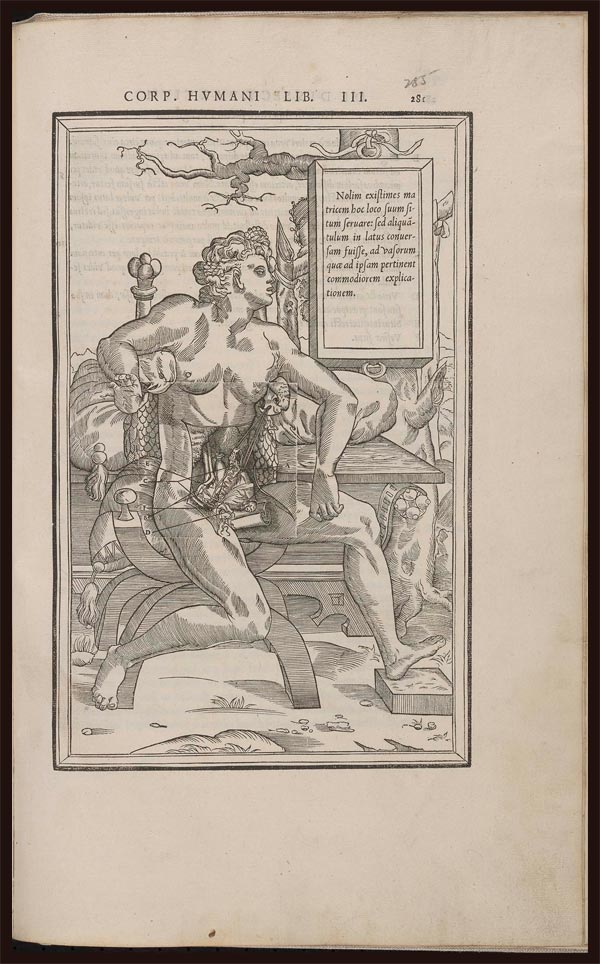Charles Estienne was a member of a prestigious dynasty of French scholar-printers. He studied medicine at the University of Paris, from which he graduated in 1540, and he lectured on anatomy there between 1544 and 1547. De dissectione contains sixty-two full-page woodcuts printed from fifty-six woodblocks. The most striking feature of these illustrations is that some of them had been previously employed for other purposes. For instance, we know that the female figures were originally designed as a series of erotic mythological woodcuts entitled “Loves of gods” and designed by the Italian artist Giovanni Jacopo Caraglio (d. 1565). The book had been completed by 1539 but did not appear until 1545. A legal dispute between Charles Estienne and Etienne de la Rivière, a surgeon-barber and artist, postponed the publication for a few years.


